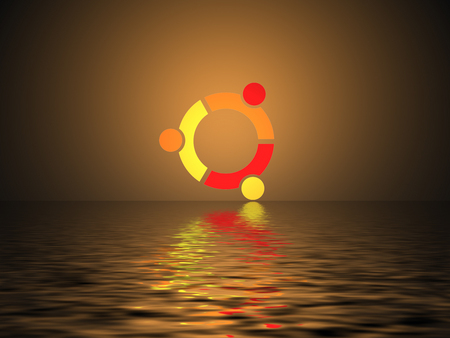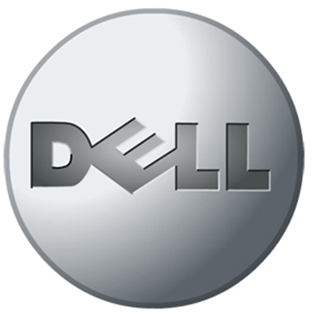
RECOVERY FROM
Dell 2400 PC booting to black screen ---
and Desktop Icons gone and Nautilus
'Places' failing to open directories


|
RECOVERY FROM
Dell 2400 PC booting to black screen ---
|

|
!Preliminary! A few more notes or links may be added.
|
Introduction : As I described on an Ubuntu Installs web page, I installed Ubuntu 9.10 Linux on a Dell 2400 PC in November 2009. At that time, I encountered a problem with Ubuntu 9.10 consistently booting up to a black screen (instead of to a 'graphical' login prompt). I found a workaround by adding a 'reboot=b' parameter to a Linux startup menu line in the file '/boot/grub/grub.cfg'. Well --- a year later (21 Oct 2010), it was 'deja-vu'. I ended up with another case of booting (repeatedly, consistently) to a black screen on the Dell PC. Here is the background of that situation : the events leading up to that situation --- and an eventual solution (or pair of solutions).
Arriving at the Dilemma On 21 Oct 2010, I was adding some software on the Dell PC --- after copying about 45Gig of data from a Maxtor external disk drive --- which contained my home directory backup, from my 'home-built' PC, which also had Ubuntu 9.10 installed. The desktop and Gnome panels were working fine on the Dell PC after that data migration. (I was doing this data migration after I 'fried' the video board on my 'home-built' PC and it was 'in the shop' being trouble-shot and repaired. I was putting a home-directory backup of that 'home-built' PC on a couple of my other desktop PC's --- this Dell and a CyberpowerPC.) I noticed that I had never put the programs I use the most (Seamonkey web browser, Thunderbird email client, mtpaint image editor, and Filezilla FTP client) on the Dell PC. (I had used the Dell PC as a 'guinea pig' PC, to test installing Ubuntu 9.10 before trying to install 9.10 on my 'home-built' PC. After finally getting Ubuntu 9.10 going on the Dell, I proceeded to install 9.10 on the 'home-built' PC with hardly a 'look back' at the Dell --- that is, hardly any logins to the Dell PC for about a year --- November 2009 to October 2010.) I added the Seamonkey, Thunderbird, and mtpaint software to the Dell PC via the 'Ubuntu Software Center'. I had just added the Filezilla FTP client via the 'Ubuntu Software Center'. I started up Filezilla and used the Help option to check on the version number of that Filezilla install. The Help-version window came up, but my entire desktop froze up. I could not close the Filezilla Help window --- and nothing else on the desktop worked. I could not close the Filezilla app. I could not access the Shutdown option. Alt-F2 would not provide a Run prompt. I could not activate anything on the upper or lower Gnome panels. Ctl-Alt-Del could not be used to kill the X-session, since Ubuntu developers deactivated that option starting in a previous Ubuntu release. (I think this was a mistake.) I could find no way to break out of the freeze-up. I tried 'Esc' and many key combinations such as 'Ctl' with the F1 thru F12 keys --- and 'Alt' with the F1 thru F12 keys --- and 'Ctl-Alt-d', which is supposed to be a keyboard shortcut to 'hide all windows'. I finally powered down the PC --- but very reluctantly, since I was concerned about some files becoming corrupted. It seems my concerns were justified. When I tried to power up the PC, I encountered some text bootup messages, the black screen, a silenced disk drive, no appearance of the Ubuntu bootup progress bar, and no apparent way to get to the graphical login prompt. The Dell PC consistently 'hung' at the black screen on bootup.
Toward a Resolution My first suspicion was that the '/boot/grub/grub.cfg' file had been overlaid with a 'fresh' image. So I used an Ubuntu 9.10 Live CD to be able to access the root file system on the disk. I could not access the disk file systems via the Nautilus GUI of the Live CD session. Nautilus only seemed to allow access to the RAM disk file systems. But I was able to open a 'gnome-terminal' and use 'df' to show some available file systems. One was 9 Gig in size (my Dell root file system size) with a long '/media/.....' mount directory name. I was able to 'cd' to that mount directory, and then to the 'boot' and 'grub' directories. On examining the 'grub.cfg' file, I found that the 'reboot=b' parameter was still in place --- so now I had to find some other way to get past the black screen on bootup of Ubuntu 9.10. (I tried one bootup to see if I could access the MS Windows XP installation from the Grub boot menu. I was relieved to find that I could boot up into MS Windows XP.) I did some Google searches on some terms like ubuntu dell 2400 black screen boot 2010 (more than 61,000 hits). I also added some terms like desktop icons gone nautilus places fail (still got more than 700 hits). After finding a bewildering variety of suggestions of things to try, I also tried a 'Kirkland Ubuntu Development Search' on terms like dell 2400 boot black screen solved 2010 --- using the keyword 'solved' to, hopefully, reduce the number of 'hits' to a manageable level --- and hopefully find an EFFECTIVE solution for MY situation.
To Make a Long Story Short(er) I will not mention the many things that (in some cases) worked for others and that I considered trying, but that I did not try or that did not work for me. I do not want to confuse myself or others with a lot of things that did not work for me, or that I did not try. I was hoping for a simpler solution that most of the ones I saw. And there was a simple one. I saw one thread where someone mentioned using the 'nomodeset' grub boot parameter. I put that in the 'grub.cfg' file, right after the 'reboot=b' parameter (on the first linux startup line) --- and the next bootup worked. (I used the Ubuntu 9.10 Live CD to open a 'gterm' and did 'cd' to directory '/boot/grub', after using 'df' to see the '/media/...' directory to which to 'cd'. I issued the command 'sudo gedit grub.cfg'.) A Google search on the terms ubuntu dell 2400 black screen boot 2010 nomodeset indicates that quite a few people have needed the 'nomodeset' boot parameter, on various Dell computers. (over 1,200 hits)
At some points in the whole 'trying things' process, I encountered a problem with the Gnome upper panel 'Places' option not working. (Clicking on 'Home' resulted in a 'busy' icon for about 20 seconds or more, but no opening of a Nautilus window to show the Home files.) Furthermore, my desktop icons (for Seamonkey, Thunderbird, etc.) were gone. During the process of repeatedly rebooting to try various things, I chose the 'Linux recovery mode' option from the boot menu (a menu similar to the one pictured below) and chose a 'netroot' option from a menu that appeared. I was able to get to a '#' prompt, at which I entered 'startx'. This gave me a Nautilus desktop on which 'Places' on the upper panel worked --- but I was working as 'root', not my usual userid.
This working of Nautilus 'Places' seemed to correspond to the suggestion on some forum threads that people got out of some similar 'Places not working' situations by using 'adduser' to add a new userid. Then they logged into that userid, for which the 'Places' Nautilus function worked --- and moved files from the original userid home directory to the home directory of the new userid. I was hoping to avoid having to move all the files and directories from one userid to another --- and I think the following allowed me to avoid that.
I am not sure if this solved that problem, but, in one forum thread, someone mentioned getting out of a very similar situation (desktop icons gone and 'Places' not working) by deleting (or moving/renaming) the '~/.local/share/gvfs-metadata/' directory. I used a rename-and-move technique that someone on that thread suggested: cd .local/share/ sudo mkdir gvfs-metadata.BKUP sudo mv gvfs-metadata/* gvfs-metadata.BKUP/ It may be that some file(s) in the directories under 'gvfs-metadata' were corrupted --- probably when I had to power down the computer when the entire desktop froze. (I may go back to the 'gvfs-metadata.BKUP' someday and compare files there with files under 'gvfs-metadata', to see if a file corruption can be determined.)
SUMMARY It seems that two things got me out of this mess, the mess being:
The two things that seemed to be the solution:
I swear --- Ubuntu Linux is getting to be hard on my heart.
A Postscript : When people have problems with Gnome desktop icons disappearing or Nautilus mal-functioning, in forum threads you usually see advice on removing (or renaming) the several Gnome hidden directories in your home directory, because a file in those directories has probably been corrupted. The three directories mentioned: However, there are another couple of hidden-home-directories that can house the culprit (I have found the hard way) --- namely: I have to agree with a writer in a recent Linux Format Magazine (Nov 2010) --- see quotes below. The Gnome developers need to consolidate all their configuration files into one (or two) directories of the home directory. Currently, Gnome is updating files --- for example, as your computer shuts down --- in too many different directories, making it hard to track down how to fix a corruption problem as evidenced by desktop icons disappearing (or changing), or Nautilus malfunctioning or not functioning at all. Apparently that writer has gone through agonies similar to those I describe in these pages. Here is what Mike Saunders of Linux Format Magazine wrote in the Nov 2010 issue, in an article entitled '24 Things We'd Change About Linux' : The current Unix-style filesystem layout is an archaic mess. It's silly that, when you install a program,it's exploded into loads of different directories all over your filesystem. Apps should be standalone, like in RISC OS, Mac OS X, and many other desktop OSes. Gobo Linux has the right idea. I couldn't agree more. It is ridiculous to put the main binary executable in /usr/bin, the documentation in /usr/share/doc, various dynamic executables in /usr/lib or /etc/lib, etc. etc. Saunders augmented his quote with some specifics on Gnome : Do we really need hidden directories called '.gnome', '.gnome2', and '.gnome2_private'? At least KDE has the courtesy to put all its files in one place --- and has done for a long time." I think he is referring to the hidden directory '.kde' where most KDE configuration files seem to reside. |
|
Bottom of a web page on RECOVERY FROM Dell 2400 PC booting to black screen --- with Desktop Icons gone and Nautilus 'Places' failing to open directories.
To return to a previously visited web page location, click on the
< Go to Top of Page, above. >
|